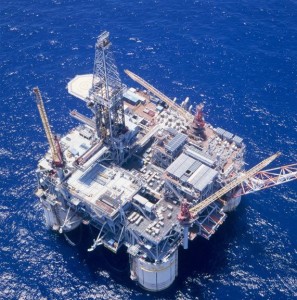Not every Gulf oil company deserves a post-BP boost (Stone Energy)
Now that the BP well has been finally containmed, it is only natural that market participants have come to expect a great deal of the shrinkage in valuation of Gulf oil producers to reverse itself to some degree. Certainly there will be new regulations, and perhaps more onerous inspection standards, but on the whole it seems that people are expecting some return to normalcy in Gulf extraction operations.
However, even if it is likely that many Gulf oil extractors will rebound up to, or even above, the price levels prevailing before April 20th, not all of them deserve that rebound. Some of them were in fact overpriced to begin with.
 Stone Energy (SGY) is an example: on April 20th, the day the oil rig exploded, their stock closed at 18.42. It dropped to a low of 10.30, and as of September 13th, closed at 12.44. Normally one would consider this company as primed for considerable appreciation now that the oil spill is contained and the Gulf is attempting to move on.
Stone Energy (SGY) is an example: on April 20th, the day the oil rig exploded, their stock closed at 18.42. It dropped to a low of 10.30, and as of September 13th, closed at 12.44. Normally one would consider this company as primed for considerable appreciation now that the oil spill is contained and the Gulf is attempting to move on.
However, a closer look at Stone Energy’s free cash flow suggests otherwise. Stone Energy currently trades at a reasonable, if not robust, P/E ratio of 14.18, but the free cash flow picture tells a different story.
Free cash flow is the amount of a company’s earnings that it can actually distribute without affecting its earnings power. The notion of free cash flow as a thing separate from accounting earnings goes back to Benjamin Graham, who reminds us that the “true” profits of a business can only be calculated after deducting whatever expenditures allow the business to maintain its earnings power. Sometimes depreciation is a proxy for these expenditures, but in many cases, capital expenditures on a forward-looking basis have nothing to do with a backwards-looking measure like depreciation. As a result, a convenient estimate for free cash flow for a given period is earnings plus depreciation minus capital expenditures.
I am aware that not all capital expenditures are intended to replace used-up earnings power, and that for many companies, some or most of capital expenditures are intended to expand earnings power rather than simply maintain it. However, no company ever differentiates maintenance capital expenditures from growth expenditures in its financial reports. However, the conservatism necessary for investing in general, and especially for oil extraction companies, which by their nature invest in assets with finite lives and thus are constantly in need of replacement assets, it is advisable to treat all capital expenditures as maintenance expenditures unless there is a very good reason not to.
Stone Energy’s projected capital budget in 2010 is $400 million, of which $170 million has been spent to date. In 2009, the figure was $320 million, in 2008 the figure came to $450 million, and in 2007, 230 million, not counting an acquisition in 2008 that was paid for mainly in stock. So it would seem that the figure of $400 million is not of an outsize proportion that could be dismissed as nonrecurring.
Year to date, Stone Energy has reported earnings of $56 million and depreciation of $124 million, not appreciably better than results of the first two quarters last year (not counting a nonrecurring impairment that I shall have more to speak of later). Taking out the $170 million in capital expenditures year to date, this gives us free cash flow year to date of zero. This represents an improvement over last year’s estimated free cash flow of minus $36 million for the first two quarters, but still nothing that would justify a great deal of optimism, particularly with capital investments estimated to come in $60 million higher over the latter half of the year.
For the full year 2009, free cash flow was $60 million (neglecting the large impairment and the tax writeoffs that it produced). In 2008, estimated free cash flow as adjusted was $175 million, and in 2007, free cash flow was $252 million.
Much of this diminution in earnings is the result of the dramatic fall in oil prices from their 2008 peak, which was also the cause of a writeoff of $466 million in goodwill and $1.814 billion in property values. Although the impairments are themselves a noncash expense, it is clear that their effects on earnings power have not been exaggerated.
So, even though Stone Energy may see a recovery in its share prices as a result of a broad recovery in Gulf oil produdcers’ prices, it does not appear that the current free cash flow levels would support it. It would be more prudent to look elsewhere for a more sustainable recovery from the BP-caused lows.
Leave a Reply